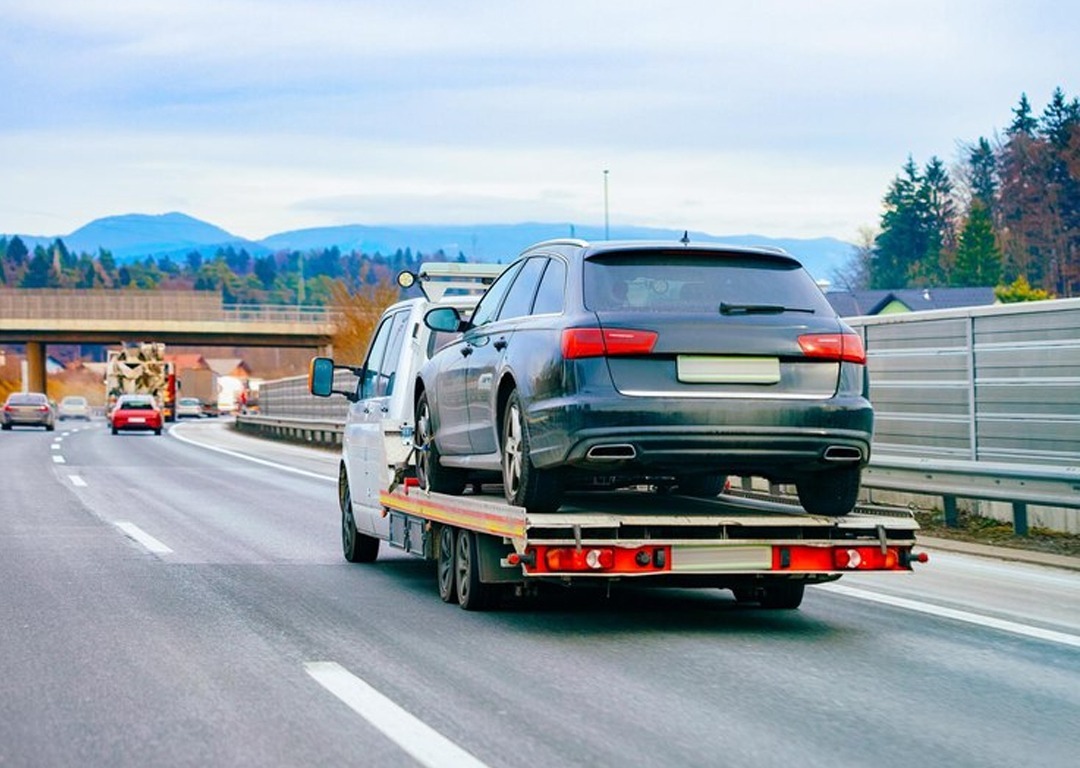How to Track a Vehicle in Transit
Shipping a car, motorcycle, or any other vehicle can be daunting. You’re entrusting your prized possession to a company, hoping it arrives safely and on time.
Thankfully, technological advancements have made tracking your vehicle’s journey a breeze. This guide offers helpful information and will equip you with the knowledge to follow your vehicle in transit with peace of mind.
Understanding Tracking Methods: Your Toolkit for Monitoring Your Vehicle
There are four primary methods for tracking a vehicle in transit, each with its advantages:
Online Tracking
This is the most popular and convenient option. Reputable auto transporters provide a secure online portal where you can enter a unique tracking number associated with your vehicle.
This number is usually provided upon booking. Once logged in, the portal displays real-time or updated information about your vehicle’s location, estimated arrival date, and potential delays. Imagine it as a virtual map keeping you constantly updated.
Mobile Tracking
Many auto transport companies offer mobile apps that mirror the functionalities of their online tracking portals.
These apps allow you to track your vehicle on the go, receive push notifications about its progress directly to your phone, and even contact customer service representatives if you have any questions.
Picture having the tracking information readily available in your pocket, accessible anytime, anywhere.
Email Notifications
If you prefer a more hands-off approach, opting for email alerts from the transporter is a good option. These emails will be sent periodically to inform you about your vehicle’s location and estimated delivery timeframe.
While more instant than online or mobile tracking, emails provide a convenient way to stay updated without actively checking the status. Think of it as a scheduled update delivered straight to your inbox.
Phone Tracking
For those who value a more traditional approach, contacting the transporter directly via phone is an option.
You can speak with a customer service representative or your designated account executive, who can access the vehicle’s location using GPS technology and provide you with detailed tracking information.
This method allows for a personalized touch, letting you ask specific questions and get immediate answers.
Choosing the Right Tracking Method: Tailoring Your Tracking Experience
The best tracking method for you depends on your personal preference and comfort level:
-
- Tech-savvy individuals: Online or mobile tracking is ideal for real-time updates and constant monitoring. Stay glued to the virtual map and never miss a beat.
-
- Periodic Updates: Email notifications offer a good balance between staying informed and avoiding information overload. Get updates on your schedule, not theirs.
-
- Personal Interaction: Phone tracking lets you speak directly with a representative and ask specific questions. A human touch can be reassuring.
When selecting a transporter, comparing quotes to find cheap auto transport services without compromising quality is wise.
Essential Considerations Before You Track
Not all companies offer tracking
While most reputable auto transporters provide tracking options, always inquire about their specific system during booking. Feel free to ask for details like the frequency of updates and the type of information available.
Tracking limitations
Real-time tracking might only sometimes be available, especially in remote areas. Updates might be delayed, or the system might display an estimated location instead of a precise one. Think of it like a generally accurate roadmap that may have occasional detours.
Communication is critical
Contact the transporter directly if you have any concerns about the tracking information or your vehicle’s status. Open communication can alleviate unnecessary stress.
4 Tips for Tracking Your Vehicle with Confidence
Consider these tips when tracking your vehicle especially if it’s being moved through open auto transport or enclosed auto shipping:
1. Gather Information: Before your vehicle is picked up, ensure you have all the necessary tracking information, including your unique tracking number, the transporter’s contact details, and login credentials for the online portal (if applicable). Having everything at your fingertips saves time and frustration.
2. Bookmark or Download: Bookmark the online tracking portal or download the mobile app for easy access. This way, you can check on your vehicle with just a few clicks or taps.
3. Set Realistic Expectations: Understand that tracking systems might not provide minute-by-minute updates. Delays can occur due to weather, traffic, or unforeseen circumstances. Be patient and trust the process.
4. Maintain Open Communication: If there are significant delays or deviations from the estimated delivery timeframe, contact the transporter for a clear explanation and revised timeline. A proactive approach can help manage expectations and minimize surprises.
How To Ensure A Smooth Vehicle Transport Experience
While tracking your vehicle is valuable, there are other steps you can take to ensure a smooth and stress-free transport experience:
Choose a Reputable Transporter
Conduct thorough research before selecting a company. Read reviews, compare quotes, and ensure they offer transparent pricing and a proven track record. A reputable company with a good reputation is less likely to have issues during transport.
Tip: When searching for a transporter, it’s important to choose a company with experience in handling RVs, as not all transporters specialize in RV shipping.
Proper Vehicle Preparation
Prepare your vehicle for transport according to the transporter’s instructions. This might involve removing personal belongings, disabling alarms, ensuring adequate fluid levels, and taking pictures of any existing dents or scratches. Following these guidelines provides a smooth loading process and minimizes the risk of damage.
Detailed Inspection
Before loading the vehicle, conduct a thorough walkaround inspection with the driver and document any existing dents, scratches, or damage. Take pictures or videos of these imperfections and note them on a condition report provided by the transporter. This documented record protects you in case of any damage during transport.
Insurance
Consider purchasing additional insurance coverage for your vehicle during transport. This can provide peace of mind in case of unforeseen damage. Different levels of coverage are available, so choose the one that best suits your needs and budget.
Additional Tip: Owners of boats should consider additional insurance coverage when arranging transportation, particularly for boat delivery service, to safeguard against potential damage during transit.
Understanding the Insurance Options
Auto transporters typically offer basic liability coverage as part of their service. However, this might not cover all potential damages. Here’s a breakdown of standard insurance options:
-
- Basic Liability Coverage: This is usually included in the base transport cost and covers damages caused by the transporter’s negligence.
-
- Full Coverage Insurance: This provides more comprehensive protection, covering damages caused by accidents, theft, vandalism, or weather events.
-
- Gap Insurance: This covers the difference between your vehicle’s actual cash value (ACV) and the amount your primary insurance pays if it’s totaled during transport.
For owners of luxury vehicles, considering full coverage insurance is essential to ensure peace of mind during the shipping process, especially for luxury vehicle shipping.
What to Do Upon Delivery
-
- Final Inspection: Upon delivery, carefully inspect your vehicle, comparing it to the documented condition report completed before transport. If you notice any new damage, immediately document it with photos or videos and notify the transporter’s representative on the spot.
-
- Bill of Lading: Once you’re satisfied with the vehicle’s condition, sign the Bill of Lading, which acknowledges receipt of the car in the agreed-upon condition.
By following these steps, you can ensure a smooth and stress-free vehicle transport experience.
Remember, clear communication with the transporter throughout the process is critical. Don’t hesitate to ask questions and voice any concerns you may have.
Conclusion
Tracking your vehicle in transit doesn’t have to be a source of anxiety. You can stay informed about your vehicle’s location and progress by utilizing the available tracking methods offered by reputable transporters and following the tips outlined in this guide.
With clear communication with the transporter, proper preparation, and the right insurance coverage, you can ensure a smooth and successful transport experience.
So, the next time you ship a vehicle, you can track its journey with confidence and peace of mind.
FAQs
Q1: What is vehicle tracking in transit?
A1: Vehicle tracking in transit refers to the process of monitoring the location, movement, and behavior of vehicles while they are in motion, typically using GPS technology.
Q2: How does vehicle tracking technology work?
A2: Vehicle tracking technology works by using GPS (Global Positioning System) satellites to pinpoint the location of a vehicle, along with various sensors and communication devices to transmit this information to a central server or monitoring system.
Q3: Why is it important to track vehicles in transit?
A3: Tracking vehicles in transit is important for fleet management, security, and logistics optimization. It helps in monitoring vehicle whereabouts, ensuring timely delivery, improving efficiency, and enhancing overall safety.
Q4: What are the benefits of using vehicle tracking systems?
A4: Benefits of using vehicle tracking systems include improved fleet management, reduced fuel costs, enhanced driver safety, optimized route planning, better customer service with accurate delivery estimates, and increased security against theft or unauthorized use.
Q5: What types of vehicles can be tracked in transit?
A5: Various types of vehicles can be tracked in transit, including but not limited to cars, trucks, vans, buses, trains, ships, and aircraft. Essentially, any vehicle equipped with GPS and appropriate tracking technology can be monitored while in transit.






